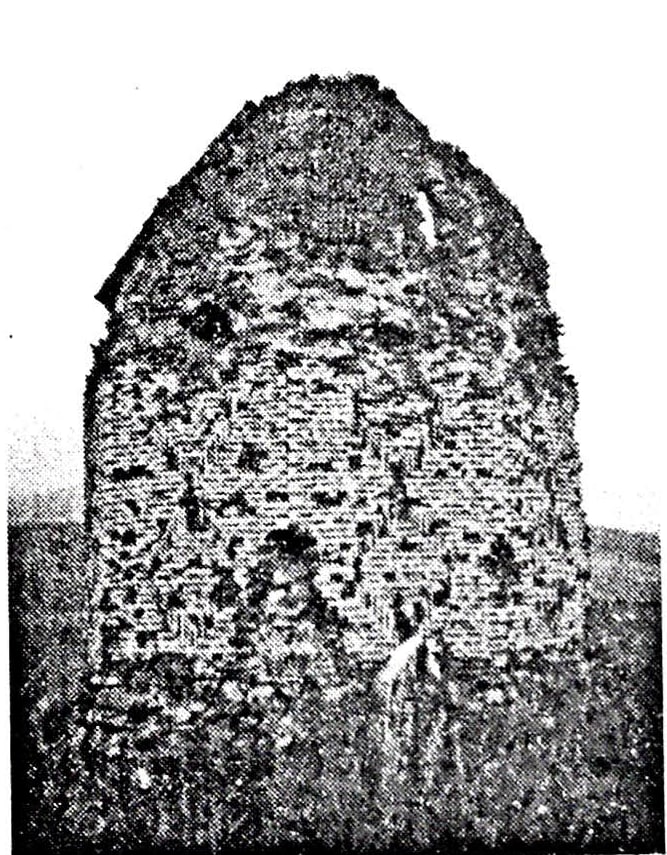Jalil Mausoleum
Qarabag.com continues publishing materials about historical monuments of Karabakh.
Jalil Mausoleum is located in the cemetery near the village of Garghabazar in Fizuli district.
[A.V. Salamzade. Architecture of Azerbaijan in the XVI-XIX centuries, 1964, p. 63]
[Karabakh: History in the context of the conflict\\Meshadi Khanum Neymatova. Epigraphic monuments of Karabakh. 2014, p. 162]
The mausoleum was erected in 1792-1793 by the architect Ibrahim Khalil. The monument was named after a person buried in it – Jalil. This is confirmed by a poetic inscription in Persian, written with black ink on the wall inside the mausoleum: “Forgive the sins of this buried one, whose name is Jalil. If you look for an architect (of mausoleum), that is Ibrahim Khalil. 1207 h.g. (=1792\93).”
[Karabakh: history in the context of the conflict\\Meshadi Khanum Neymatova. Epigraphic monuments of Karabakh. 2014, p. 162]

There is not much information about the mausoleum of Jalil in Soviet and Azerbaijani sources. But in the books “History of Architecture of Azerbaijan” of 1963, and “Architecture of Azerbaijan of the XVI-XIX centuries” of 1964, there are mentions about Garghabazar Mausoleum. Presumably, this was Jalil Mausoleum.
In the book “History of Architecture of Azerbaijan” of 1963, it is noted that the mausoleum is an octagonal structure built of bricks. The use of brick as a wall material distinguishes this monument from the octagonal mausoleums of the Araks region of the XVI-XVII centuries. In the book “Architecture of Azerbaijan of the XVI-XIX centuries”, 1964, it is stated: “The compositional feature of Garghabazar Mausoleum is the large size of the entrance opening, unusual not only for local mausoleums, but also for the mausoleums of the north Azerbaijan of the XVI-XIX centuries.”
[M.Useynov. L.Bretanitsky, A.Salamzade. The history of architecture of Azerbaijan. 1963, p. 314]
[A.V.Salamzade. Architecture of Azerbaijan of the XVI-XIX centuries. 1964, p. 63]
With the occupation of Fuzuli by Armenian armed formations, in 1993, the mausoleum was destroyed.